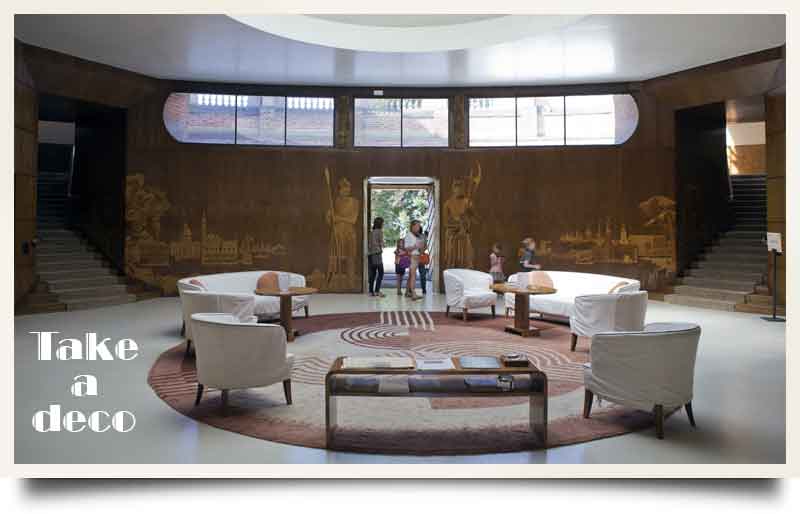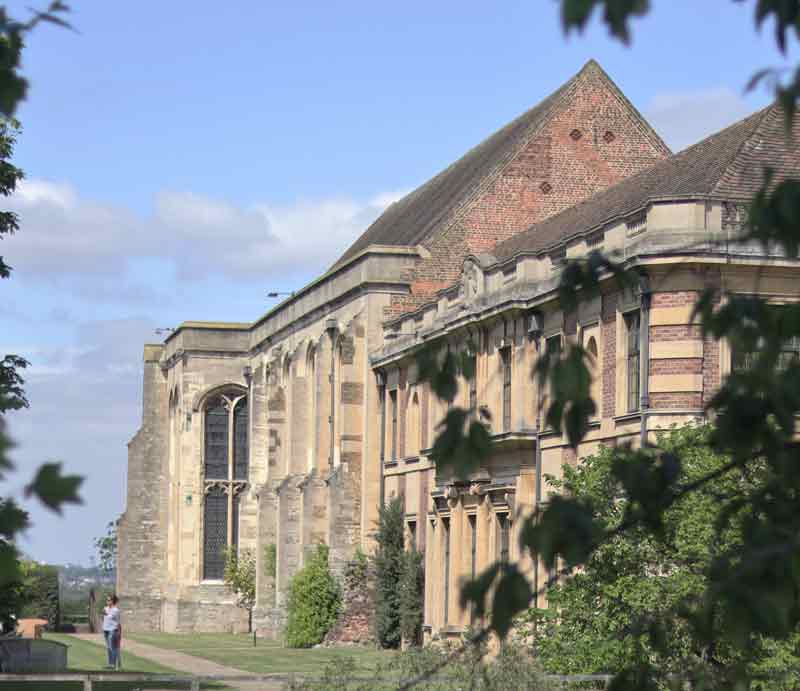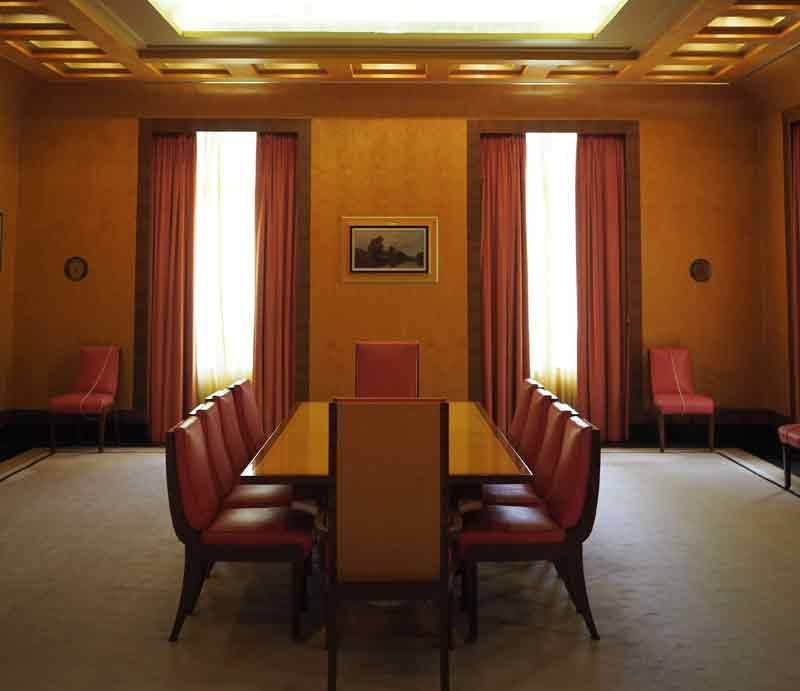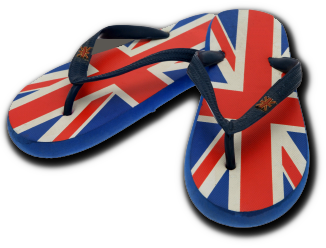A manor of Eltham is recorded in the Doomsday survey of 1086 as belongong to the half-brother of William the Conqueror, Odo, Bishop of Bayeux. The manor house was rebuilt by Anthony Bek, Bishop of Durham who acquired the estate in the late 13th century. It's at this point that Eltham's royal heritage begins as Bek presented the manor to the future king of England, Edward II in 1305. Over the next couple of centuries Eltham was one of the largest and most royaly frequented palaces in the country.
Eltham Palace London Private Guided Tours

You'll be hard pressed to find a building with such contasting styles as Eltham Palace. What was originally a medieval great hall was transformed with modernist features by eccentric millionaires Stephen and Virginia Courtauld in the 1930s.
The building sits within 19 acres of splendid award winning gardens, which are as quirky as the mansion itself. There's London's oldest working bridge and the beautiful Rock Garden with its series of pools and cascades running down to a moat.

Many alterations and improvements were made to the palace and the grounds by royalty during the medieval period. Richard II, Henry IV and Edward IV all contributed but it was during Edward's reign that the great hall that we see today was constructed. The King's last visit to Eltham was to attend a lavish Christmas feast for an astonishing 2,000 attendees.
The last monarch to invest significantly in Eltham was King Henry VIII who spent much of his childhood there. Works included a brick-built chapel and new royal lodgings. After this Henry showed preference to Hampton Court and Greenwich and by the time of King James I the manor was showing signs of disrepair. Further decline saw the estate being used as a farm for the next couple of centuries. The nineteenth century saw renewed interest in Eltham and some repairs were undertaken and further buildings constructed. The great hall, which had been used as a barn, was shored up and remarkably used as a tennis court as well as for its intended use as a venue for functions.
And so begins the story of the Courtaulds and Palace. Stephen Courtauld was an heir to a textile fortune. He married Virginia in 1925 and in the early part of the 1930s they had started to look for a semi-rural retreat away from London.

Art Deco architecture
After purchasing Eltham in 1933 the couple employed architects Seely & Paget to build a modern home on the site of the 19th century buildings. Sir Charles Peers, formerly Chief Inspector of Ancient Monuments with the Office of Works, became involved to ensure as little impact on the historic palace as possible. The art deco style of the day was heavily drawn upon giving the property a modern edge.
Features of the new house were designed to compliment the great hall and interior decoration became a mix of historical and modern, ideas drawn from both the architects and the Courtaulds. Fashionable interior designers of the day were employed including Peter Malacrida and the Swede, Rolf Engströmer. The latest mod cons were installed including a loudspeaker system, a centralised vacuum cleaner and underfloor gas-powered heating.
The family moved out in 1944 as a response to bombing in World War II and the remainder of the lease was passed to the Army Educational Corps. The Ministry of Works then assumed maintenance of the palace with an emphasis on the preservation of the medieval elements over the 1930s additions. English Heritage are now responsible for Eltham Palace.

 Book Tour
Book Tour


